This section explores what life might look like over time with the three different surgical options. Life After Surgery opens with What Matters Most to You? Questions and Practice Statements that will help you consider what is most important to you for the future. It also includes sections on Life with Amputation and Rotationplasty, and Life with Limb Salvage Surgery. The decision aid concludes with a list of Resources such as camps, prosthetic companies, and more patient stories that can help you understand the options.
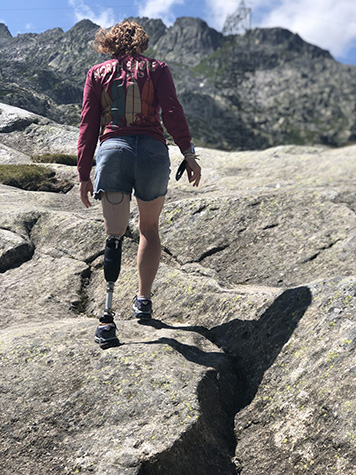
What Matters Most to You? Questions
These will help you have a better understanding of what a “new normal” might look like and consider how much change is acceptable to you. Try using these questions to prompt discussions with your family and your surgeon or as writing prompts to explore what is most important to you when making this decision.
I want to let patients know to think about beyond this year and the next year. Think about 10 years from now, you know. What are you going to want to be doing? I’ve seen a lot of young kids now who are smart and think, well, I want to do sports. So, maybe I should do the amputation because I can do more with a prosthetic. Because the limb salvage is usually so limiting.
Surgeons and families can both be biased toward saving the leg. Naturally, patients want to return to their normal life as quickly as possible. The patients and parents who contributed to this decision aid would like new patients to know that regardless of which option is chosen, your body will not be the same. Many families wish they understood that they will have a new normal with a different body. They can still enjoy the activities they did before, in a different way.
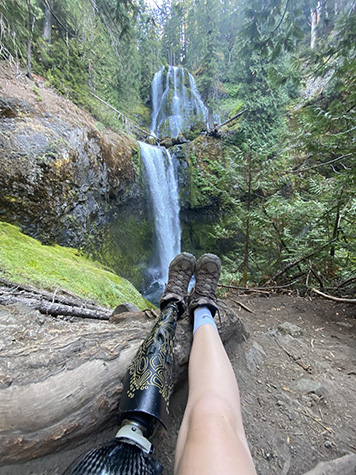
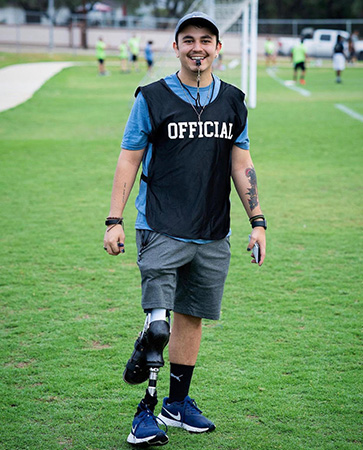
Instructions for Questions
Start by getting a journal, paper, or copy them into your computer. Set aside some time to think through your responses to these questions. This exercise will help you better understand your concerns about each option and to balance hope with realistic expectations for what a new normal might look like for you.
Long Term
Appearance
What concerns do you have about the appearance of your leg:
- ... after amputation?
- ... after limb salvage surgery?
- ... after rotationplasty?
- ... with prosthetic leg?
- ... and being self-conscious?
Functional
What concerns do you have about whether you:
- ... will walk for long periods of time?
- ... can stand for long periods of time?
- ... will be able to run or jump?
- ... can participate in sports?
- ... will need a prosthesis to walk?
- ... will need an assistive device (crutches, wheelchair) when not using a prosthesis?
Issues
What concerns do you have about possible issues with:
- ... amputation?
- ... limb salvage surgery?
- ... rotationplasty?
Questions for Thinking About a New Normal
- What kind of new normal is most appealing?
- What do you consider to be a good quality of life moving forward?
- What kinds of activities do you or your child like the most?
- What kinds of experiences bring the most joy?
- What are your expectations for a new normal?
- How concerned are you that the leg looks like everyone else’s leg?
- How concerned are you that you will have regrets about the decision?
I’m a huge athlete. I played softball and I was a runner. I was never once asked any of that. I was never asked what I wanted out of life.
I recommend that parents think about what activities their child enjoys, and what they may want to do in the future. A child whose identity is wrapped up in sports may be happier with rotationplasty or amputation. A child who can feel OK not playing high-impact sports may prefer limb salvage surgery.
What Matters Most to You? Practice Statements
Instructions for Practice Statements. Think about how you feel when you read these statements aloud. Try putting some of these statements in your own words to help you try on the perspective. This exercise can help you better understand what you think of as a good life with the different options.
| 1 | It is important to me that my leg looks as normal as possible. |
| 2 | It will not bother me to have unexpected surgeries over time. |
| 3 | Having a leg that looks normal is more important than being able to play sports. |
| 4 | Sports are not important to me. |
| 5 | Being active is not important to me. |
| 6 | I would rather take a chance on having a normal looking leg even if I have an amputation later. |
| 7 | I understand that an amputation after limb salvage surgery might mean having a shorter femur that will be harder to use a prosthesis. |
| 8 | I think it is important to do everything I can to save my leg. |
| 10 | Having a backwards foot on my knee would not bother me. |
| 11 | Sports are important to me. |
| 12 | It is important to me to avoid future surgeries, if possible. |
| 13 | I do not mind people asking me questions about my appearance. |
| 14 | It is important to me that I blend in with other people. |
| 15 | I do not mind standing out in a crowd. |
| 16 | I do not mind talking to strangers. |
| 18 | If there were complications after a rotationplasty that required an amputation, I would still think it was worth it because I wanted the benefits that came with rotationplasty. |
| 19 | Limb salvage was not worth it because what I really care about is having the least number of surgeries so I can move on with life, even if that means having an amputation. |
| 20 | I do not mind having a lot of surgeries and potential pain if it means saving my leg and having a normal-looking leg. |
| 21 | I feel good about the decision I made regardless of how things turn out for me/my child. |
| 22 | I feel like I will always wonder what might have happened if I made a different decision. |
What to Expect
It is hard to predict what life will be like after surgery but in this section, you will find information about what you might expect with the different options.
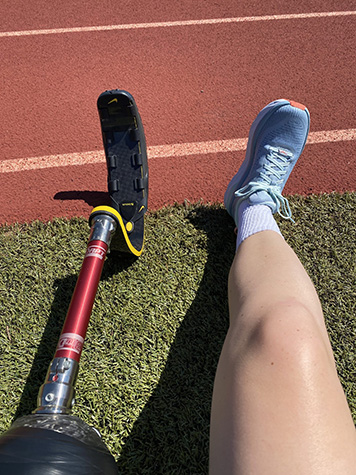
… After Amputation or Rotationplasty
Whether you choose rotationplasty or amputation, you will have a lifetime relationship with a prosthetist, a healthcare professional who makes artificial limbs. If you have an amputation above the knee (AKA), you will have a prosthesis, or artificial leg, to replace your leg, including a leg, ankle, and foot with artificial parts. It will include a molded socket that fits over your amputated leg, referred to as a residual limb.
People with rotationplasty can expect to wear a prosthesis a few months after surgery. However, amputation may result in a longer wait-time due to increased swelling. Chemotherapy can delay the ability to wear a prosthesis and makes patients more prone to infection. The time it takes to be comfortable in a prosthesis varies greatly and depends on many factors that differ between patients.
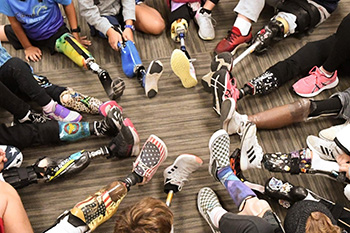
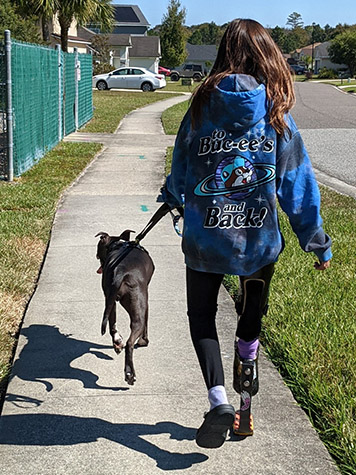
If you choose rotationplasty, you will have a different type of molded socket that fits over your foot, and your ankle would serve as a knee. Your ankle moves in all directions unlike your knee did, so the prosthesis will require metal hinges to prevent injury. A prosthetic foot will then be attached below the socket to make up for the difference in your limb length.
There are hundreds of prosthetic components available and regardless of whether you choose amputation or rotationplasty, you will work closely with your prosthetist to choose the best ones for you. Prosthetic feet range from looking highly realistic to specialized “blades” for sport or competition, or just walking the dog.
Here are some links to look at different kinds of prostheses:
Here is a video showing how to put on a prosthesis for an amputation: Putting on a prosthesis for AKA.
Here is a video showing how to put on a prosthesis for a rotationplasty: Putting on a prosthesis for RP.
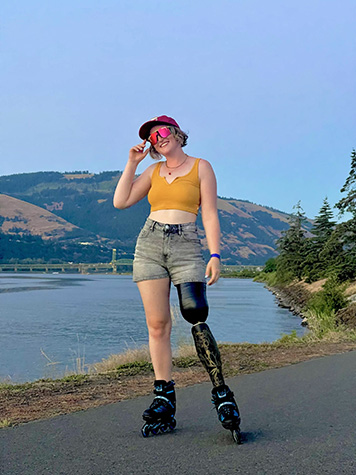
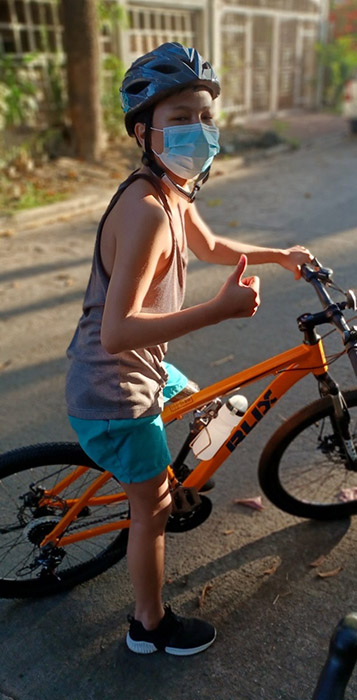
Insurance. Communication with insurance companies for a prosthesis can be challenging. Different insurance companies will approve or deny different prostheses. Sometimes you need an in-network letter of agreement from your prosthetist for your insurance. Look into this ahead of time so you’re prepared to get fitted for a prosthesis after your surgery.
I’ve learned to become a huge advocate for my socket. Understanding insurance and knowing what I want and what I like took a while. It just takes time.
We were set on the amputation; we knew there were things she was going to be able to do. We just met with the prosthetist two weeks ago. That aspect of it is still very, very new. We have no idea. How long can you wear it? You know what I mean? We have no idea, we’ll get there, but it’s a learning curve. No one just tells you…
Meet with prosthetists before you make your decision to find one you mesh with and to learn more about what special parts or components would best suit your needs. Prosthetists are knowledgeable about insurance submissions and can help you understand what is available to you. The Amputee Coalition has a Prosthetist Finder - enter your zip code and the prosthetists near you will be located: Amputee Coalition Prosthetist Finder.
I didn’t even know there were different knees or a micro-processor knee or anything like that…. I wish I would have met different prosthetists before I had the amputation.
Some people report excellent mobility with a prosthesis and can be active in sports and other high impact activities that involve running or jumping. Others choose to use a prosthesis less frequently, and some people opt to not use one at all. Deciding when or how much to wear a prosthesis is a personal choice.
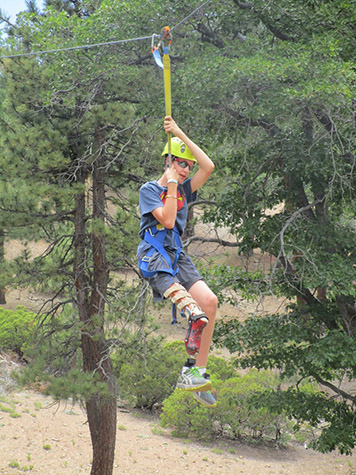
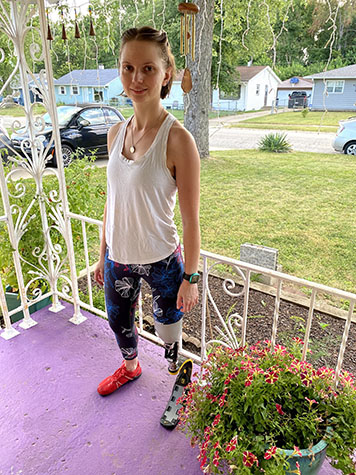
It is important to know that your residual limb can change shape if you do not wear a prosthesis regularly. Your limb will also change if you gain or lose weight so be aware these changes may require more adjustment to the socket or may require a new socket altogether.
I would say just even with the rotationplasty and not having a prosthetic, that she’s able to do more.
Life with Limb Salvage Surgery
Patients with limb salvage have an endoprosthesis, metal rods that run inside the bones, with an artificial knee. This differs from a traditional knee replacement surgery. Rehabilitation with limb salvage surgery is more complicated due to the amount of muscle, bone, and surrounding tissue removed around the tumor.
When you look up videos you see all these people walking perfectly. We thought that would be how it is for our son. But because of the size of his tumor - that's not possible for him now. If we knew he'd have a limp, it would have helped prepare for that sooner. It would have set better expectations.
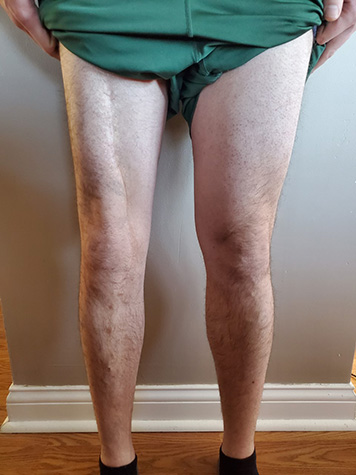
An MRI after chemo and prior to surgery will help show how much tissue needs to be removed for clear margins. Even with imaging, surgeons don’t know how much of the area around the tumor will be removed until they are in surgery. Talk with your surgeon about this and how it will affect the success of this surgery.
That was one of the big things that I had an issue with, is still trying to redevelop that muscle and stuff again. I didn’t realize that much of it. She said she didn’t know how much she was going to have to remove. I’m glad that I did it but still when you mentally know you can do it but physically it won’t let you, sometimes that’s where you get frustrated.
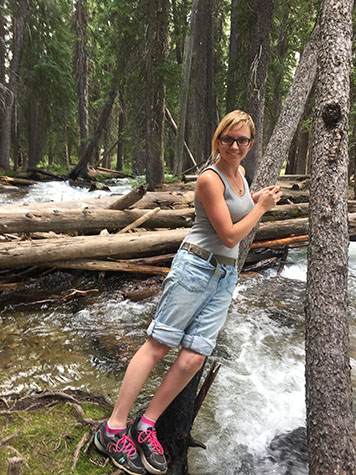
People who choose limb salvage surgery should be prepared to work closely with a physical therapist. Your best chances at doing well with this surgery will depend not only on how much muscle was removed but also on your ability to get moving as soon as your surgeon recommends it.
My son may not have been at 100% as he was before the surgery, but it didn't stop him from trying. I think an amputation would have been very difficult for him emotionally due to his desire to play the sports he loves.
There will be future decisions to be made regardless of which option you choose and more decisions after that. If you choose rotationplasty or amputation, there will be decisions about which prosthetic components will work best for you. There are a variety of different feet, ankles, knees, sockets, and liners. You can choose patterns, designs, and artwork for your socket.
I think it’s just really a matter of being straight up and being honest about things. A mentality in the medical field that’s starting to become a little bit better but having doctors who are able to say, “I don’t know,” I think is really going to be important.
If you choose limb salvage surgery, you may one day choose another surgery to better meet later quality of life goals. One patient had a limb salvage surgery at age 15, but at age 41, they were considering rotationplasty if their next surgery did not meet their expectations: “If this doesn’t work out, I think rotationplasty would be what I would want to do next for sure. Because I wouldn’t want just straight amputation, I wouldn’t really have much of a limb to work with for the prosthetic.”
Resources
In addition to the Social Support listed in Know Your Options, here are other resources that offer education, support, and camps.
The highlighted text is a link that when clicked, will take you directly to that website.
Groups and Organizations
The Amputee Coalition is not specific for bone cancer, but they do have resources for people who have amputation or rotationplasty. The Peer Support Program will match patients and caregivers. This is for support only, and they do not offer advice. They also have the National Limb Loss Resource Center for information, a National Conference and a Youth Engagement Program that includes a youth camp. Financial support is available. They also have publications that include First Step: A Guide for Adapting to Limb Loss and Insurance Coverage & Reimbursement: How to Be Your Own Advocate.
Bone Cancer Research Trust is a UK organization with information about osteosarcoma and other types of primary bone cancer. Surgical options outside the USA are similar. They also have a plethora of patient stories to explore.
Challenged Athletes Foundation provides opportunities and support to people with physical challenges, so they can pursue active lifestyles through physical fitness and competitive athletics.
Dr. Pete Anderson is a pediatric oncologist at the Cleveland Clinic who is widely regarded as an osteosarcoma expert for both children and adults. Here is the process for requesting a virtual visit with him and his multidisciplinary team:
- Call 216-444-5437 to get a Medical Record Number (MRN)
- Upload CD of images/scans in DICOM format to the following link: Cleveland Clinic Image Exchange or Fed Ex to: Attn Pete Anderson, R1 Peds Onc, Cleveland Clinic, 9500 Euclid Ave, Cleveland, OH 44195
- Contact Dr. Pete with the MRN and a brief half page summary including your state: (andersonmdphd@gmail.com or andersp@ccf.org)
MIB Agents is a nonprofit dedicated to Making It Better (MIB) for the community of patients, caregivers, doctors, and researchers with the goal of less toxic, more effective treatments, and a cure for osteosarcoma.
- MIB Ambassador Agents: Connects osteosarcoma patients and families to osteosarcoma survivors and their families to provide support to those in treatment.
- MIB Book: Osteosarcoma: From Our Families to Yours: Informed by our Scientific Advisory Board, medical professionals, and patient families.
- MIB Clinical Trial Search: This is an Osteosarcoma-specific CT search that connects directly to ClinicalTrialSearch.gov but makes the often unwieldy site more digestible around your needs. You will find a trial in under 6o seconds.
- MIB FACTOR: An annual conference for researchers, doctors, and families.
- MIB Gamer Agents: Lead Gamer Agents are trained to game with warriors in active treatment, survivors, and siblings. We have gamers on all platforms.
- MIB OsteoBites: This is a weekly webinar and podcast that is especially useful for resources and clinical trial info from the people leading the trials.
- MIB OS Resources: From MIB and our vetted partners who have information, resources, and services that may be of help.
- MIB OsTEAo: Young Adult Podcast on Childhood Cancer, addressing topics of importance to the AYA Cancer Community.
- MIB Prayer Agents: Prayer Agents are available for urgent or ongoing prayer requests. Whatever your spiritual practice, you are welcome.
- MIB Testing & Research Directory: This guide helps you find a place to submit bio samples to inform a personal treatment plan or research.
- MIB Warrior Mail: OsteoWarriors receive monthly letters of hope and cheer from MIB Agent Writers around the world.
MyPART My Pediatric and Adult Rare Tumor Network (MyPART) is on the National Cancer Institute page. MyPART is a broad network that includes families, patients, scientists, and healthcare providers who work on rare tumors and they have a MyPART Bone Cancer section.
National Cancer Institute: My Pediatric and Adult Rare Tumor Network (MyPART) is a broad network that includes families, patients, scientists, and healthcare providers who work on rare tumors, but they are not bone cancer specific.
Osteosarcoma Collaborative brings together data, researchers, patients, and families to find new cures for osteosarcoma. Through advocacy, fundraising, education, and awareness regarding the disease, they support new treatment options for patients.
Osteosarcoma Decision Aid is a website for patients and families who are making the decision for surgery when the tumor is around the knee joint.
Osteosarcoma Institute has a free resource called OSI Connect that connects patients, families, and caregivers to an osteosarcoma expert physician to answer questions.
Osteosarcoma Project is for people who are interested in contributing to research. It is the largest osteosarcoma medical history and genomics registry in the world and has the data to understand the disease and identify new possible treatments. Here is a video with osteosarcoma families that explains it. It is run by the Broad Institute and the Dana-Farber Cancer Institute.
Sarcoma Centers is a list of medical centers and hospitals specializing in sarcoma on the Sarcoma Alliance website. Because sarcomas are rare, it is important to find physicians who have experience with this disease. Search a list of US centers by state or a list of international centers.
Little Warrior Foundation has a blog with recorded webinars specific to Ewing's sarcoma called Ewings U. These feature doctors and researchers discussing everything from clinical trials to making the surgical decision.
Prosthetic Companies
To learn more about prosthetics, check out these companies for photos and videos. They also have patient stories, peer mentors, and many other resources.
- New Ewing Amputation Paves Way For Better Robotic Legs
- AOPA Website and AOPA Facebook Page - American Orthotic & Prosthetic Association (AOPA)
- Fillauer Website and Fillauer Facebook Page
- Hanger Website and Hanger Facebook Page
- Kenney Website and Kenney Facebook Page - Indiana/Kentucky/North Carolina
- Martin Bionics Website and Martin Bionics Facebook Page
- Ossur Website and Ossur Facebook Page
- Ottobock Website and Ottobock Facebook Page
- POA Website and POA Facebook Page - Prosthetic & Orthotic Associates (POA)
- SRT Prosthetics Website and SRT Prosthetics Facebook Page - Indiana/Kentucky/Wisconsin
Resources for the Three Main Options
Amputation/Rotationplasty Resources
- The Amputee Coalition is not specific for osteosarcoma, but if your child has an amputation or rotationplasty, they have a youth camp and other resources available: Amputee Coalition Youth Resource
- Camp No Limits has several camps for kids with limb loss in the United States, including one specifically for rotationplasty. See what the first rotationplasty camp looked like in 2022: Rotationplasty Camp Video 2022. Financial support is available.
- Adventure Amputee Camp offers camp activities that range from physically challenging to sedentary and entertaining. They stress social contact and campers come from the Midwest, Mid-Atlantic, and Southeast areas of the United States. Financial support is available.
Limb Salvage Surgery Resources
More Patient Stories
Organizations with Patient Stories
- The Bone Cancer Research Trust has a plethora of bone cancer patient stories including some from the USA: UK Bone Cancer Patient Stories
- MIB Agents: Patient Stories of Hope has many osteosarcoma patient stories.
- University of Kansas Cancer Center Bone Cancer Stories has several bone cancer patient stories.
More Patient Stories: Amputation
More Patient Stories: Limb Salvage Surgery
Limb Salvage Surgeries First, Second Surgery Later
More Patient Stories: Rotationplasty
Please email me if you would like decision support or help using this decision aid: osteosarcomadecisionaid@gmail.com. If you find links that are no longer working, or if you'd like to suggest a link or provide other feedback, contact me. The Osteosarcoma Decision Aid is designed by patients, for patients. Your input is valued and welcomed!

